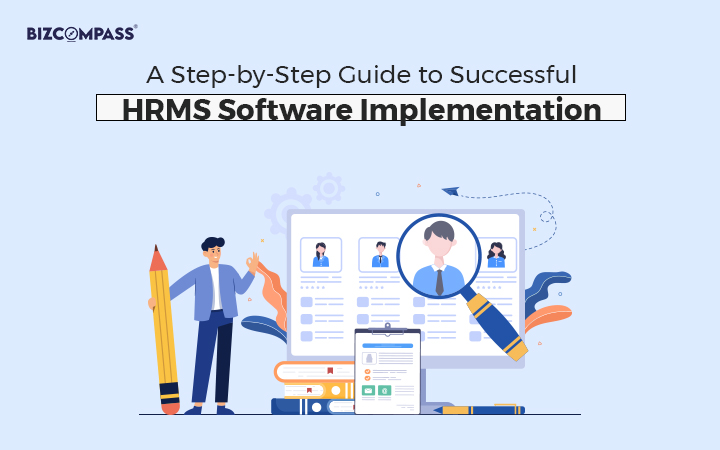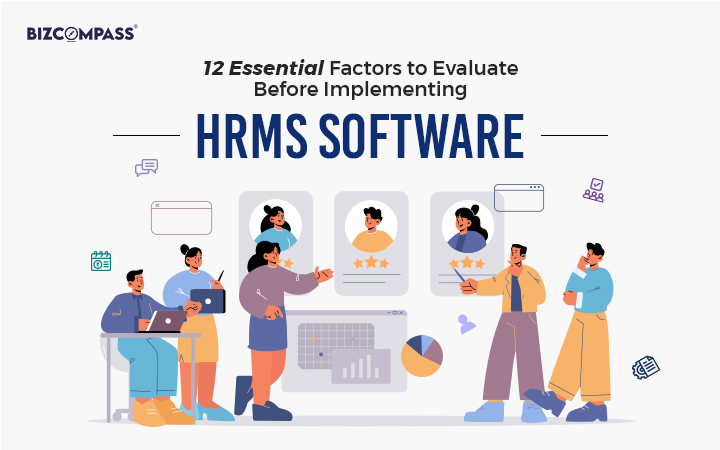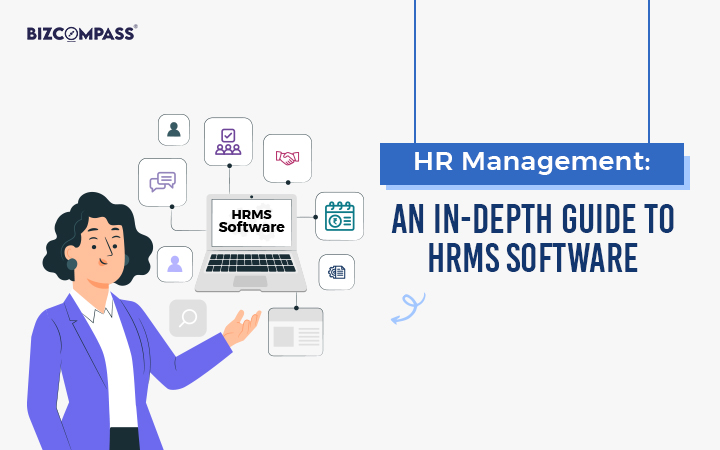Introduction
Embarking on the journey to implement Human Resource Management System (HRMS) software brings transformative potential, but not without its share of challenges.
In this insightful blog, we delve into the top hurdles organizations encounter during HRMS software implementation and provide strategic insights on overcoming them.
From data migration complexities to user adoption issues, we navigate the intricacies of each challenge, offering practical solutions to ensure a smooth transition. Explore how to optimize your HR processes, enhance employee experiences, and successfully navigate the implementation landscape to unlock the full potential of HRMS software for your organization's growth and efficiency.
Top Challenges In Implementing HRMS Software
Implementing HRMS software poses challenges like data migration complexities, resistance to change, and user adoption issues. Overcoming these hurdles is crucial for unlocking the full potential of HR technology, ensuring seamless integration, and optimizing HR processes. Discover effective strategies to navigate these challenges and enhance your organization's HR management capabilities.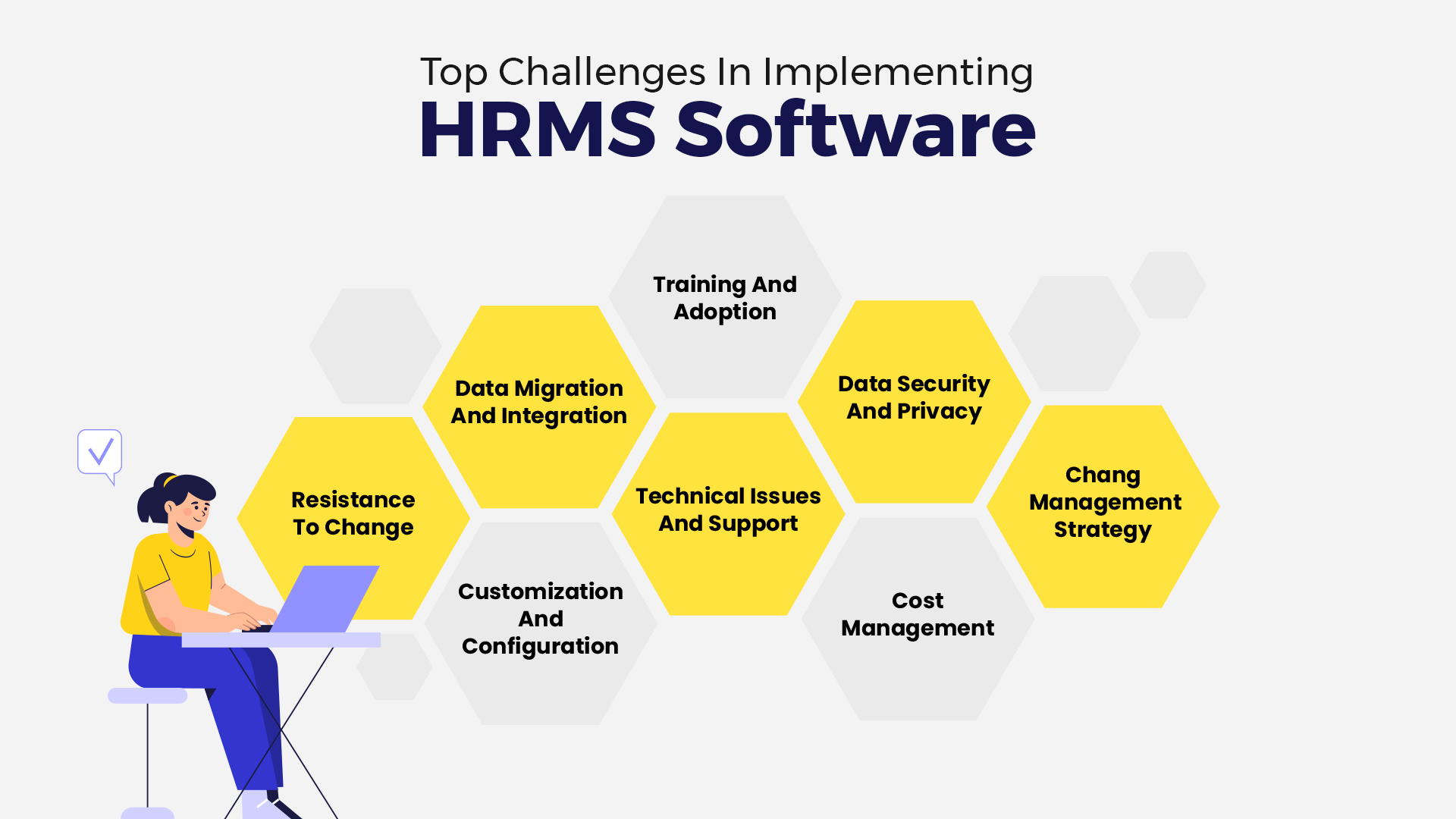
Resistance To Change
Resistance to change is a common obstacle during the implementation of HRMS software. Employees may harbor concerns about adapting to new technology and its impact on their daily routines. Effectively addressing these concerns requires talking about the benefits of HRMS.
Highlighting how the system streamlines processes, enhances efficiency and improves overall work experiences can alleviate apprehensions. By fostering an understanding of the positive impact on individual workflows and the firm as a whole, businesses can encourage a more receptive mindset, ensuring a swift transition and maximizing the benefits of HRMS adoption.
Data Migration And Integration
Data migration and integration pose critical challenges during HRMS software implementation. Smoothly transferring existing data to the new system requires meticulous planning and execution to prevent loss or corruption. Additionally, integrating HRMS software with other existing tools is essential for seamless workflow continuity.
Overcoming these challenges demands careful coordination, thorough testing, and robust integration strategies. A successful resolution ensures data accuracy, consistency, and accessibility, empowering organizations to leverage the full potential of their HRMS while maintaining a cohesive and interconnected digital ecosystem.
Customization And Configuration
Navigating customization and configuration challenges is vital in HRMS software implementation. Tailoring the software to align with specific HR processes requires a delicate balance between meeting unique organizational needs and leveraging the software's default functionality.
Striking this equilibrium ensures optimal system performance and user experience. Over-customization can lead to complexities and maintenance challenges, while relying solely on default settings may limit the software's adaptability.
Successful resolution involves a thoughtful approach, understanding organizational requirements, and adopting a flexible configuration strategy to achieve a harmonious blend of tailored features and the inherent capabilities of the HRMS software.
Training And Adoption
Training and adoption present critical aspects of successful HRMS software implementation. Offering comprehensive training programs for both employees and HR staff is essential to familiarize them with the system's functionalities.
Employing effective strategies to encourage consistent usage and adoption further solidifies the software's integration into daily workflows. Clear communication about the benefits, ongoing support, and emphasizing the positive impact on efficiency fosters a culture of acceptance.
Regular feedback loops, addressing concerns, and showcasing success stories contribute to a smoother transition. By prioritizing training and adoption strategies, organizations can maximize the effectiveness of their HRMS investment and optimize overall workforce management.
Technical Issues And Support
Addressing technical issues and establishing robust support mechanisms are crucial in HRMS software implementation. Dealing with software glitches and technical difficulties demands a proactive approach, including continuous monitoring, rapid identification of issues, and prompt resolution. Establishing a reliable support system for troubleshooting ensures that users have timely assistance when encountering challenges.
This involves not only resolving issues but also providing clear communication channels, documentation, and training for users to navigate technical aspects effectively. By prioritizing technical stability and responsive support, organizations can enhance the overall user experience, foster confidence in the system, and optimize the benefits of their HRMS software.
Data Security And Privacy
Maintaining the confidentiality of sensitive employee data requires a stringent commitment to privacy standards. Implementing robust security measures, such as encryption protocols and access controls, becomes imperative to prevent unauthorized access and data breaches.
Compliance with relevant data protection regulations should be a top priority. By prioritizing data security, organizations not only protect sensitive information but also build trust among employees. A comprehensive approach to data security and privacy not only aligns with regulatory requirements but also strengthens the foundation for a secure HRMS environment.
Cost Management
Effective cost management is essential in HRMS implementation, involving careful budgeting and consideration of potential hidden costs. Beyond initial expenses, organizations must account for training, support, and integration costs. Analyzing the long-term return on investment (ROI) is crucial, assessing how the system contributes to increased efficiency and reduced operational costs. Balancing upfront investments with the expected benefits ensures financial sustainability.
Regularly reassessing costs and ROI helps organizations optimize their HRMS investment, making informed decisions about upgrades and expansions. A strategic approach to cost management ensures that the implementation aligns with organizational goals, delivering sustained value.
Change Management Strategy
Developing a structured plan for managing the transition involves clear communication, outlining objectives, and establishing a timeline. Identifying key stakeholders and their roles is crucial; involvement and support from leadership, IT, and end-users are essential.
Engaging employees through regular communication, training programs, and addressing concerns fosters a positive mindset toward change. Incorporating feedback loops ensures continuous improvement. A proactive approach to change management not only facilitates a smoother transition but also promotes a culture of adaptability, laying the foundation for the successful adoption of HRMS within the organization.
Overcoming HRMS Implementation Challenges
Overcoming HRMS implementation challenges requires a strategic approach. Prioritize comprehensive training, address technical issues promptly, and establish robust data security measures. Develop a well-balanced change management strategy, involving key stakeholders to ensure a smooth transition. Thoughtful customization, cost management, and a focus on long-term ROI contribute to successful implementation. Here are a few points that you should consider while implementing HRMS software.
Clear Leadership And Communication
Clear leadership and communication are pivotal in successful HRMS implementation. Appointing a dedicated implementation leader provides a focal point for decision-making and coordination.
This leader guides the project, ensuring a streamlined and effective process. Maintaining open communication channels with employees is equally crucial.
Transparent communication about the implementation process, its benefits, and addressing concerns creates a culture of trust and engagement. Regular updates and feedback loops foster a collaborative atmosphere, ensuring that employees are informed and involved throughout the implementation journey, contributing to a successful HRMS integration.
Thorough Planning And Preparation
Conducting a detailed needs assessment before implementation ensures a deep understanding of organizational requirements. This informs the creation of a comprehensive project plan, complete with timelines and milestones. Clear objectives, resource allocation, and risk assessments are integral components of this plan. By establishing a roadmap grounded in organizational needs, potential challenges can be anticipated and addressed proactively.
This meticulous approach sets the stage for a smoother implementation process, aligning the HRMS with specific business needs and maximizing its impact on efficiency and workforce.
Selecting The Right Vendor
Evaluating various software providers involves a meticulous assessment of their features, reputation, and customer reviews. Compatibility with the organization's specific needs is a critical criterion, ensuring that the chosen HRMS aligns with business requirements and goals.
Scrutinizing vendor support, scalability, and integration capabilities contributes to a well-informed decision. A careful selection process enhances the likelihood of a seamless implementation, setting the foundation for a productive partnership with the HRMS provider.
Data Cleanup And Migration Strategy
A robust data cleanup and migration strategy is imperative. Cleaning and organizing existing data before migration mitigates the risk of errors and ensures data accuracy.
Piloting data migration in a controlled environment allows identification and resolution of potential issues, enhancing the overall migration process.
Careful mapping of data fields and validation at each stage contribute to a smooth transition. By prioritizing data integrity and employing a methodical migration approach, organizations can seamlessly transfer information to the new HRMS, minimizing disruptions and optimizing the system's efficiency for effective workforce management.
Balancing Customization And Default Features
Prioritizing customization to align with critical HR processes ensures tailored functionality. However, caution must be exercised to avoid overcomplication that could hinder user adoption.
Striking this balance involves a thoughtful assessment of unique organizational needs against the software's default capabilities. This approach optimizes system performance, enhances user experiences, and encourages seamless adoption. By aligning customization with essential processes without overwhelming users, organizations can leverage the full potential of their HRMS while ensuring a user-friendly and efficient workforce management solution.
Comprehensive Training Program
Tailoring training sessions for diverse user groups ensures relevance and effectiveness. Addressing the distinct needs of administrators, managers, and end-users fosters system understanding and proficiency. Furthermore, offering ongoing training adapts to evolving needs, updates, and new features. This commitment to continuous learning supports a culture of proficiency and confidence, maximizing the benefits of the HRMS.
A well-designed training program not only accelerates the initial adoption process but also cultivates a skilled and adaptable user base, contributing to the long-term success of the HRMS.
Establishing Technical Support
Collaborating with the software vendor ensures access to specialized technical assistance, resolving complex issues efficiently. Simultaneously, setting up an internal support team enhances immediate troubleshooting for day-to-day challenges.
This dual approach provides a comprehensive support framework, combining external expertise with an internal team familiar with organizational intricacies. Regular communication channels, documentation, and training for end-users further empower the support system.
By prioritizing technical support, organizations fortify the reliability of their HRMS, ensuring uninterrupted functionality and fostering confidence among users and stakeholders.
Security Measures And Compliance
Implementing robust encryption and access controls safeguards sensitive data, preventing unauthorized access. Adhering to industry regulations and compliance standards ensures the HRMS aligns with legal requirements and industry best practices. This proactive approach not only protects confidential information but also instills trust among users and stakeholders.
Regular security audits and updates further strengthen the system's resilience against evolving threats. By prioritizing data protection and compliance, organizations establish a secure foundation for their HRMS, mitigating risks and bolstering the overall integrity.
Monitoring And Continuous Improvement
Regularly evaluating software performance and collecting user feedback provide insights into potential issues and areas for enhancement. This iterative approach allows organizations to adapt and improve the system based on user experiences and evolving needs.
Proactive monitoring helps identify and address issues promptly, ensuring optimal functionality. By fostering a culture of continuous improvement, organizations not only maximize the benefits of their HRMS but also create an adaptive environment that aligns with evolving business requirements, technological advancements, and user expectations, ultimately contributing to the long-term success of the HRMS implementation.
Conclusion
In conclusion, navigating the implementation of HRMS software requires a strategic approach to overcome various challenges. From data migration intricacies to user adoption hurdles, addressing each obstacle with thoughtful planning, training, and clear communication is key.
Balancing customization, selecting the right vendor, and prioritizing data security contribute to a successful implementation. Establishing ongoing support, comprehensive training programs and monitoring for continuous improvement ensure sustained success. By embracing these strategies, organizations can harness the full potential of HRMS, optimizing workforce management and fostering a digitally empowered, efficient, and agile workplace for long-term growth and success.
FAQ
What are the common challenges in implementing HRMS software?
Data migration complexities, resistance to change, customization issues, and technical difficulties.
How can organizations overcome data migration challenges during HRMS implementation?
Organizations can overcome data migration challenges by conducting thorough data cleanup, implementing a meticulous migration strategy, and piloting data migration to identify and address issues.
What is the significance of a change management strategy in HRMS implementation?
A change management strategy is crucial for guiding the transition process, addressing employee concerns, and ensuring a smooth adoption of HRMS. It involves appointing a dedicated leader, maintaining open communication, and fostering a positive mindset toward change.
How can organizations balance customization and default features during HRMS implementation?
Organizations can achieve a balance by prioritizing customization based on critical HR processes while avoiding over-complication that might hinder adoption. This involves a thoughtful assessment of organizational needs against the software's default capabilities.
What is the importance of establishing technical support during HRMS implementation?
Establishing technical support involves collaborating with the software vendor for specialized assistance and setting up an internal support team for immediate troubleshooting. This ensures a comprehensive support framework for resolving both complex and day-to-day issues.
How can organizations ensure data security and compliance during HRMS implementation?
Ensuring data security involves implementing encryption and access controls, while compliance is achieved by adhering to industry regulations and standards. This proactive approach protects sensitive data and ensures alignment with legal requirements.
Why is continuous monitoring and improvement essential in HRMS implementation?
Continuous monitoring and improvement involve regularly evaluating software performance, collecting user feedback, and iteratively improving the system based on experiences and evolving needs. It ensures optimal functionality, addresses issues, and fosters a culture of ongoing improvement.
What role does comprehensive training play in HRMS implementation?
Comprehensive training is crucial for familiarizing employees and HR staff with the new system. Tailoring training sessions for different user groups and offering ongoing training help address evolving needs and ensure a skilled and adaptable user base.
How can organizations select the right HRMS vendor during implementation?
Selecting the right vendor involves evaluating various providers based on features, reputation, and customer reviews. Compatibility with organizational needs, vendor support, scalability, and integration capabilities are essential criteria for making an informed decision.
What are the key takeaways for successful HRMS implementation?
Successful implementation requires thorough planning, clear leadership, effective change management, a balanced approach to customization, technical support, data security, and continuous monitoring for improvement. Selecting the right vendor and prioritizing comprehensive training contribute to long-term success.

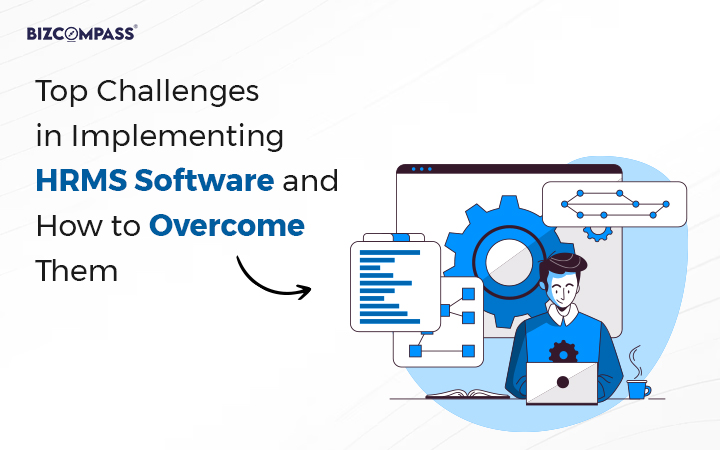
 >
>
